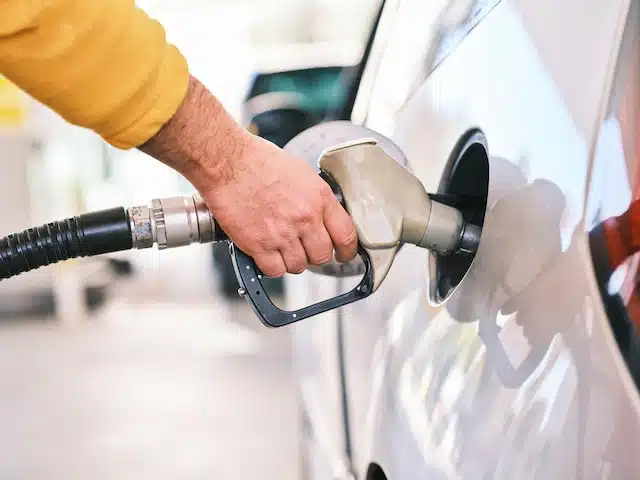Home » Blog » Car » Cars: Understanding Them » The Must-Dos of a Fuel Consumption Comparison When Buying a Car
Categories
Tags
animal welfare
breed profile
buying a car
buying a pet
Car
car accessories
car care
car features
car insurance
Car safety
car sales
car service
cat
cat behaviour
cat body language
Cat Breeds
cat food
cat insurance
comprehensive car insurance
Dog
Dog Behaviour
dog body language
Dog Breeds
dog food
Dog Insurance
dog training
eco friendly cars
Kitten
New Car
pet accessories
pet activities
Pet Adoption
pet breeders
pet days of the year
pet fun stuff
Pet Health
pet insurance
pet parenting
Pet Safety
pet services
Puppy
rescue pets
road safety
road trip
safe driving
Recent Blog:
Facebook Posts
1 week ago
Ready for a fun challenge? 🐾 Take a wild guess: What breed is this adorable fellow? 🐶 Drop your answers in the comments, and don't forget to scroll down to check if you nailed it! 🎯 Let's see who knows their dog bree#dogbreedquizgBreedQuiz![]() .
.![]() .
.![]() .
.![]() .
.![]() .
.![]() .
.![]() .
.![]() .
.![]() .
.![]() .
.![]() .
.![]() .
.![]() .
.![]() .
.![]() .
.![]() Lagotto Romagnolo
... See MoreSee Less
Lagotto Romagnolo
... See MoreSee Less
1 week ago
Did you know heart disease in dogs and cats can start with bad oral health? Find out more.....
... See MoreSee Less
Why Pet Dental Health is Linked to Heart Disease and Other Illness
bit.ly
Pet dental health usually brings to mind images of teeth and gums. In reality, it goes far beyond that. Pet oral health can be directly linked to systemic2 weeks ago
Yes or No - got any road adventures planned for Easter? Whatever you answered, here are some great ideas for this year (or next):![]() #easter.
... See MoreSee Less
#easter.
... See MoreSee Less
Driving, Flying and Staycations with Dogs and Cats this Easter
bit.ly
Is cat or dog friendly Easter travel on your wishlist? You're one of many! Travelling with dogs, cats and even some other critters (think bearded dragonsWith the climate crisis at full tilt, doing a fuel consumption comparison when buying a car seems like less of a luxury and more of a necessity. Choosing well between petrol, diesel and LPG gas – or perhaps electric or hybrid – takes some dedicated research. After all, the fuel efficient cars are cheaper on your pocket and the environment.
What’s not to love about spending less and wasting less?
Speaking of spend; on average, Australians are now paying a record $96.93 per week on petrol. According to Transport Affordability Index Reports, fuel is the no.2 highest weekly car-related cost (now over 25%), after loan payments (40.8%).
In this article PD Insurance gets to the bottom of the efficiency and environmental impacts of the different types of fuel, so you can choose a car that’s right for you and stretch your money further.
Table of contents

How to read fuel consumption labels
Figures on fuel consumption labels, which all new light vehicles in Australia are required to display, provide the number of litres a particular model of car consumes for every 100 kilometres it travels.
A laboratory that simulates different driving conditions conducts fuel consumption comparison testing for these labels. Two test environments are studied then a combined average is calculated from there:
- Urban average L/100km
- Extra Urban average L/100km
- Combined Test average L/100km
The Urban figure represents fuel consumption while driving in inner-city conditions with heavy, stop-start, local traffic.
The Extra Urban figure represents fuel consumption at slightly higher average speeds, slightly longer distances and includes trips with acceleration to reach highway speeds.
The Combined Test figure is exactly as it says – a figure that reflects a combination of both these types of driving conditions.

Do fuel consumption labels work?
As important as fuel consumption labels are, the figures they provide are just a guide.
There are big discrepancies between official test results and real-world fuel consumption. This is because testing conditions can’t possibly take into account all the different variants that affect consumption in real-world conditions.
In everyday life, aspects like traffic conditions, vehicle condition, load, engine size and even how you drive your car will affect how much fuel your car consumes. And while, say, 6L/100kms on the label is considered pretty good, it’s probably realistic to expect your actual consumption will be a bit higher.
The lowdown on diesel fuel comparison
Have you ever considered doing a diesel and petrol car fuel consumption comparison? No? Then you might want to reconsider because diesel engines are more efficient than petrol by a whopping 30-40%. So, what’s the catch?
- Cost of diesel vs fuel cost. Yep, you guessed it. Diesel fuel costs more than petrol. You can also expect to pay a few thousand more for the privilege of owning one, but they tend to retain their value at time of sale.
- Maintenance. Plus, diesel engines are more complex, meaning they have slightly higher servicing costs. Buying a secondhand diesel vehicle? It’s probably worth getting it checked by a specialist diesel mechanic before you drive away.
- Environment. Another consideration is that while diesel engines emit similar C02 as petrol engines, they produce more toxic hydrocarbons, oxides of nitrogen and particulate matter. This is a bigger problem in areas with higher population density, and why a number of countries are moving to ban diesel engines.
- Enhancing diesel design. In Australia however, the sale of diesel is still going strong and improved engine technology now includes particulate filters to reduce unavoidable toxic emissions.
Are you a mostly urban driver? You need to know that inner city driving isn’t going to give you the cost benefits you’re looking for in a diesel engine. They reach peak efficiency while cruising at constant speeds, and suit drivers who regularly use the highway.
So, they might be better for those who regularly do longer trips, or who need the power to tow heavier loads for longer distances. When it comes to choosing the most fuel efficient cars, read more on diesel vs petrol for a fuller understanding of the fuel consumption comparison.

Petrol fuel comparison: Need to knows
When it comes to a car fuel consumption comparison, petrol vehicles are just plain thirsty. They use more fuel than diesel engines but it’s (slightly) cheaper at the fuel pump. Also on the positive side, they’re quick off the mark, making them better for stop-start, inner city and suburban driving. But their consumption comes from acceleration.
Acceleration. Petrol engines get their power at higher revs, meaning you use the most fuel when you need to plant your foot to reach and maintain higher speeds, overtake or climb hills. This makes these cars ideal for urban driving conditions where acceleration can be managed.
Driving style. The easiest way to save money on fuel in a petrol car is to take notice of how you drive. Luckily, we have some tips for improving your fuel efficiency.
Toxic emissions. Further, petrol has comparable C02 emissions to diesel, but doesn’t have the same issues with other toxic emissions due to self-regulating catalytic converters inside the cars.
Petrol cars remain the most popular choice of car in Australia, perhaps because they cost less to purchase and servicing costs are slightly less, as is maintenance (sometimes). Plus, they are better known so are potentially a more comfortable purchase.
LPG gas consumption comparison
While it’s on the decline, LPG (liquefied petroleum gas) is the kindest on emissions and on engines. The price for LPG is also around 50% cheaper at the pump, though that price gap is narrowing.
- Higher fuel consumption. The catch? Cars using LPG gas, which is a hydrocarbon fuel comprising a mix of mostly propane and butane, consume way more fuel than any other type of car (about 20% more than petrol). So in terms of a fuel consumption comparison, you’ll probably save a bit of cash but spend more time filling up.
- LPG gas cars discontinued. If you buy this type of car you’ll be more intimately acquainted with your local servo. If you can find one that still has LPG. Yep, the sale of LPG cars is on the decline. Before their closure in Australia, big manufacturers like Ford and Holden used to fit their 6 cylinder Falcons and Commodores with LPG to offset the cost of petrol in a larger 6 cylinder engine.
Now there are no new cars manufactured with LPG. And while you can still convert an existing petrol engine if you have the right kind of car, you’re looking at $3,000 – $5,000 to do so. - Engine longevity. What are the other benefits? LPG gas can potentially prolong engine life because engine oil and spark plugs need changing less often. But it’s been speculated that cheaper servicing costs might climb as the cars get rarer.
If you’re a fairly keen road-tripper, they’re probably not the car for you. A combination of their fuel-guzzling nature and the increasing rarity of LPG will mean you need to plan your trip well to ensure you don’t run dry. We’re guessing this might turn most people off.

Electric cars – consumption and emission
Of course, electric cars don’t actually use traditional fuel, making them the most fuel efficient cars by default. But when it comes to saving your pocket, what’s the lowdown on electric cars vs petrol fuel consumption? Electric cars are expensive to buy, no doubt about it. You’d could easily spend double what you would on a regular car.
But the fuel consumption comparison is interesting: apparently, you can save more than 70% on running costs and 40% on maintenance costs.
One thing to remember, however, is that most electricity in Australia comes from coal. So when you recharge your electric car you’re still probably using fossil fuel. In other words the most fuel efficient cars are only zero emission vehicles when you power up using a renewable energy source, like solar power for instance.
Take a moment to find out how hybrid vehicles compare with electric cars and how they combine both electricity and fuel. You’ll also want to read our article on the safest electric cars and if safety is important to you you’ll also be interested in uncovering the recent updates to ANCAP safety ratings.

Choosing a car that makes your fuel go further
To make the most appropriate choice about fuel consumption for you, use the comparison label as a guide. Also carefully consider your budget, lifestyle, circumstances and driving style. In combination with the info above, these questions might help you decide…
What kind of driver are you?
- A take-your-time-but-leave-early-driver, who’s chill behind the wheel
- A competitive and impatient lead-foot (with a bad tailgating habit?)
- Relaxed, but like to get up to speed quickly
What type of driving do you do most?
- Short trips that are mostly local, inner city and suburban driving
- Suburban driving, with an average of 15 – 30 mins in a car
- Regular highway driving (about an hour each week) but usually not far
- Lots of long or interstate travelling, on highways and some local
Find out more about how to choose the most fuel efficient cars in Australia here.
Insurance, whatever your fuel consumption
Enjoyed our fuel consumption comparison? Whether you’ve gone for a petrol guzzling 4×4 or a nippy little one litre to zip around town in, you’ll want comprehensive car insurance.
Because regardless of what petrol costs each month, a big repair or replacement will make a serious dent in your pocket. Click below to get a quote.
Share On:




